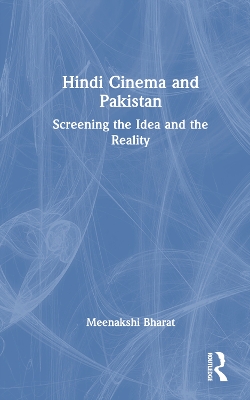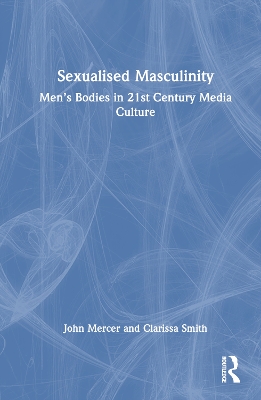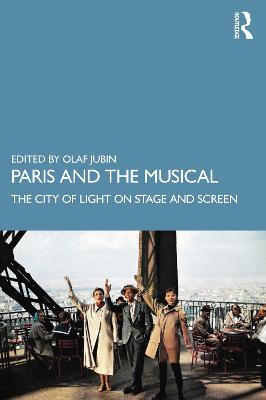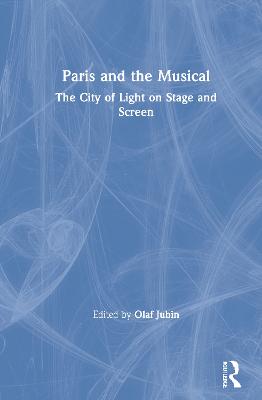Routledge Companion to Global Film Music in the Early Sound Era
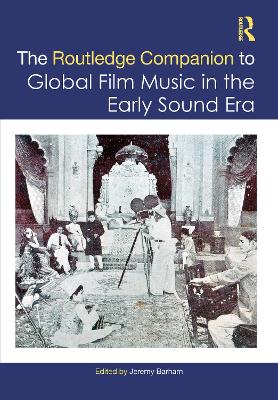 -10%
portes grátis
-10%
portes grátis
Routledge Companion to Global Film Music in the Early Sound Era
Barham, Jeremy
Taylor & Francis Ltd
01/2024
808
Dura
Inglês
9781138586697
15 a 20 dias
Descrição não disponível.
Acknowledgments
List of music examples, figures, and tables
Notes on contributors
Introduction. Jeremy Barham
PART 1. Western Europe and Scandinavia
1. "A very great error of judgment": Caution and Timidity in the Musical Provision of Britain's Early Talkie Features.
2. A Man Saying "Mooh" and an Actress Bursting into an Aria about Red and White Radishes. Early Sound Film in The Netherlands: Developments & Debates.
3. The Use of Non-Diegetic Music in Early Swedish Talkies 1930-1931.
4. The Kinotheken and Giuseppe Becce's Scoring Practices in Early German Sound Cinema.
5. Eternally Feminine: Das blaue Licht (1932), Anna und Elisabeth (1933), Elisabeth und der Narr (1933), and Cultural Representations of Womanhood in the Scoring of Early Sound Films from Weimar-Republic Germany.
6. Film Music in France, 1928-1940'.
7. Silent Film, Music, and Fantasy During the Transition to Sound.
8. Coming to Terms with Music as Narrative Architecture: Jean Gremillon's Maldone (1928), La Petite Lise (1930), and Dainah la Metisse (1932).
9. Readymade Soundtracks: Musical Accompaniment for Dada and Surrealist Film.
10. Exotic Music, Colonial Others, and French Cultural Identity in Poetic Realist Cinema.
11. The Advent of Sound Film in Italy and the First Approaches to the New Audio-Visual Genre by Italian Composers during the Years 1930-1940.
12. "Oh ... Modern Music!" Hollywood, Satire, and "Modernism" in Giuseppe Piazzi's Score for I fratelli dinamite (1949).
13. The Folkloric Film Musical in the Spanish Second Republic (1931-1939): Imperio Argentina, Florian Rey and their Morena Clara.
14. Composing the Nation: the Role of fado in A Severa, the First Portuguese Sound Film (1931).
PART 2. Central and Eastern Europe
15. Music and Dance in the Service of Modern Poland in Polish Films of the 1930s.
16. Battle of Songs: Music and Language in Left-wing Yiddish Films Made in Poland During the 1930s and 1940s.
17. Film Song as a Synergistic Commodity in the Acoustic Media Culture of 1930s Czechoslovakia.
18. Charms and Whispers: Musical Comedy and Vocal Performance in Oldrich Novy's Star Image 1936-1945.
19. The Metamusical Qualities of the Viennese Film, Cine-Operetta, and the Music Film in Austrian Sound Film of the 1930s.
20. Composing for the Screen, Composing for the Stage: Hungarian Film Composers in the Interwar Period.
21. A Theme Runs Through It: Early Hungarian Sound Films and the Music of Tibor Weygand.
22. Who is Singing Over There? The Potpourri of Multiple Voices in Early Sound Cinema of the Balkans.
23. Early Greek Talkies (1930-1940): Struggling Between Technological Innovation and Theatrical Tradition.
24. Intercultural Synergies in Early Mediterranean Sound Cinema: Togo Mizrahi's Greek-Speaking Film The Girl Refugee (1938).
25. From Alafranga to Alaturca, from Operettas to Melodramas: Music in Early Turkish Talkies.
26. "The Dream of a Fatty:" the First Lithuanian Sound Film in the Context of Early Puppet-Animation Films.
PART 3. North Africa, The Middle East, Asia, and Australasia
27. Essentially Egyptian: the Development of a Syncretic Film Song Style.
28. The Singing Cinema: Synchronized Sound and the Reception by Press and Audiences of Singing Films in Egypt, 1907-1934.
29. Myth-building through Diegetic African Music in Early South African Sound Films.
30. The Indian Origins of the Iranian Sound Film.
31. Sound and Music in the Early Indian Talkie: 1931-1936.
32. The Musical Language of Indian Film Song of the 1940s.
33. Mental Hearing of Sound: the Evocation and Mediation of Acoustic Experience in Two Stars in the Milky Way (1931).
34. Film Songwriting Practices in Pre-war Hong Kong Cinema: a Case Study of Director Chan Pei.
35. Charitable or Traitorous? The Ethics and Aesthetics of Performance in Myriad of Colors (1943).
36. Singing Japanese Modernity: a Genealogy of Performance Scenes in Early Talkies in Japan and their Heterogeneous Representation.
37. Emerging from Silence: Shochiku, Ito, and Ozu's Early Sound Films.
38. Tarzan Meets Hiawatha: Musical Representation in Australian Indigenous Films of the 1930s.
PART 4. Latin America
39. Imaginaries from Buenos Aires. From Tango Poetics of the 1920s Toward Sound Films in the 1930s.
40. Film and Tango: the Contribution of Luis Cesar Amadori to the Argentine Film Industry in the Late 1930s.
41. Songs Beyond "el Rancho Grande": Trans/national and Cross-Media Dimensions in the Mexican Comedia Ranchera.
42. Dance, Desire, and Cosmopolitanism: Early Danzon Performances in the 1930s Mexican Prostitute Melodrama.
43. Beyond the Musical Numbers: the Brazilian Film Coisas Nossas and its Arrangements with the Local Record Industry.
44. Between Cinearte and Phono-arte: on the Arrival of Brazilian Sound Film in Two Magazines.
45. Villa-Lobos's Music for the Feature O descobrimento do Brasil [The Discovery of Brazil] (1937): Nationalism in the Early Sound Era.
46. When 'Early' Sound Cinema was 'Late:' Differential Chronologies in Chile, Uruguay, Cuba and Colombia.
PART 5. Soviet Russia
47. The Sound of Socialist Realism: Excess and Ideology in Stalinist Film.
48. "New Means of Enormous Power": Music in Early Soviet Sound Film.
49. Experimentalism and the 'Mainstream' in the Early Film Scores of Gavril Popov and Vladimir Shcherbachyov.
50. Accordions as 'Sluts,' Guitars as Gypsies, and Pianos as Noble Fops: the Images of Russian Musical Instruments in Soviet Sound Movies of the 1930s.
Index
List of music examples, figures, and tables
Notes on contributors
Introduction. Jeremy Barham
PART 1. Western Europe and Scandinavia
1. "A very great error of judgment": Caution and Timidity in the Musical Provision of Britain's Early Talkie Features.
2. A Man Saying "Mooh" and an Actress Bursting into an Aria about Red and White Radishes. Early Sound Film in The Netherlands: Developments & Debates.
3. The Use of Non-Diegetic Music in Early Swedish Talkies 1930-1931.
4. The Kinotheken and Giuseppe Becce's Scoring Practices in Early German Sound Cinema.
5. Eternally Feminine: Das blaue Licht (1932), Anna und Elisabeth (1933), Elisabeth und der Narr (1933), and Cultural Representations of Womanhood in the Scoring of Early Sound Films from Weimar-Republic Germany.
6. Film Music in France, 1928-1940'.
7. Silent Film, Music, and Fantasy During the Transition to Sound.
8. Coming to Terms with Music as Narrative Architecture: Jean Gremillon's Maldone (1928), La Petite Lise (1930), and Dainah la Metisse (1932).
9. Readymade Soundtracks: Musical Accompaniment for Dada and Surrealist Film.
10. Exotic Music, Colonial Others, and French Cultural Identity in Poetic Realist Cinema.
11. The Advent of Sound Film in Italy and the First Approaches to the New Audio-Visual Genre by Italian Composers during the Years 1930-1940.
12. "Oh ... Modern Music!" Hollywood, Satire, and "Modernism" in Giuseppe Piazzi's Score for I fratelli dinamite (1949).
13. The Folkloric Film Musical in the Spanish Second Republic (1931-1939): Imperio Argentina, Florian Rey and their Morena Clara.
14. Composing the Nation: the Role of fado in A Severa, the First Portuguese Sound Film (1931).
PART 2. Central and Eastern Europe
15. Music and Dance in the Service of Modern Poland in Polish Films of the 1930s.
16. Battle of Songs: Music and Language in Left-wing Yiddish Films Made in Poland During the 1930s and 1940s.
17. Film Song as a Synergistic Commodity in the Acoustic Media Culture of 1930s Czechoslovakia.
18. Charms and Whispers: Musical Comedy and Vocal Performance in Oldrich Novy's Star Image 1936-1945.
19. The Metamusical Qualities of the Viennese Film, Cine-Operetta, and the Music Film in Austrian Sound Film of the 1930s.
20. Composing for the Screen, Composing for the Stage: Hungarian Film Composers in the Interwar Period.
21. A Theme Runs Through It: Early Hungarian Sound Films and the Music of Tibor Weygand.
22. Who is Singing Over There? The Potpourri of Multiple Voices in Early Sound Cinema of the Balkans.
23. Early Greek Talkies (1930-1940): Struggling Between Technological Innovation and Theatrical Tradition.
24. Intercultural Synergies in Early Mediterranean Sound Cinema: Togo Mizrahi's Greek-Speaking Film The Girl Refugee (1938).
25. From Alafranga to Alaturca, from Operettas to Melodramas: Music in Early Turkish Talkies.
26. "The Dream of a Fatty:" the First Lithuanian Sound Film in the Context of Early Puppet-Animation Films.
PART 3. North Africa, The Middle East, Asia, and Australasia
27. Essentially Egyptian: the Development of a Syncretic Film Song Style.
28. The Singing Cinema: Synchronized Sound and the Reception by Press and Audiences of Singing Films in Egypt, 1907-1934.
29. Myth-building through Diegetic African Music in Early South African Sound Films.
30. The Indian Origins of the Iranian Sound Film.
31. Sound and Music in the Early Indian Talkie: 1931-1936.
32. The Musical Language of Indian Film Song of the 1940s.
33. Mental Hearing of Sound: the Evocation and Mediation of Acoustic Experience in Two Stars in the Milky Way (1931).
34. Film Songwriting Practices in Pre-war Hong Kong Cinema: a Case Study of Director Chan Pei.
35. Charitable or Traitorous? The Ethics and Aesthetics of Performance in Myriad of Colors (1943).
36. Singing Japanese Modernity: a Genealogy of Performance Scenes in Early Talkies in Japan and their Heterogeneous Representation.
37. Emerging from Silence: Shochiku, Ito, and Ozu's Early Sound Films.
38. Tarzan Meets Hiawatha: Musical Representation in Australian Indigenous Films of the 1930s.
PART 4. Latin America
39. Imaginaries from Buenos Aires. From Tango Poetics of the 1920s Toward Sound Films in the 1930s.
40. Film and Tango: the Contribution of Luis Cesar Amadori to the Argentine Film Industry in the Late 1930s.
41. Songs Beyond "el Rancho Grande": Trans/national and Cross-Media Dimensions in the Mexican Comedia Ranchera.
42. Dance, Desire, and Cosmopolitanism: Early Danzon Performances in the 1930s Mexican Prostitute Melodrama.
43. Beyond the Musical Numbers: the Brazilian Film Coisas Nossas and its Arrangements with the Local Record Industry.
44. Between Cinearte and Phono-arte: on the Arrival of Brazilian Sound Film in Two Magazines.
45. Villa-Lobos's Music for the Feature O descobrimento do Brasil [The Discovery of Brazil] (1937): Nationalism in the Early Sound Era.
46. When 'Early' Sound Cinema was 'Late:' Differential Chronologies in Chile, Uruguay, Cuba and Colombia.
PART 5. Soviet Russia
47. The Sound of Socialist Realism: Excess and Ideology in Stalinist Film.
48. "New Means of Enormous Power": Music in Early Soviet Sound Film.
49. Experimentalism and the 'Mainstream' in the Early Film Scores of Gavril Popov and Vladimir Shcherbachyov.
50. Accordions as 'Sluts,' Guitars as Gypsies, and Pianos as Noble Fops: the Images of Russian Musical Instruments in Soviet Sound Movies of the 1930s.
Index
Este título pertence ao(s) assunto(s) indicados(s). Para ver outros títulos clique no assunto desejado.
film music;film sound;soundtrack;music and film;music and cinema;film studies;cinema studies;global cinema;musicology;world cinema
Acknowledgments
List of music examples, figures, and tables
Notes on contributors
Introduction. Jeremy Barham
PART 1. Western Europe and Scandinavia
1. "A very great error of judgment": Caution and Timidity in the Musical Provision of Britain's Early Talkie Features.
2. A Man Saying "Mooh" and an Actress Bursting into an Aria about Red and White Radishes. Early Sound Film in The Netherlands: Developments & Debates.
3. The Use of Non-Diegetic Music in Early Swedish Talkies 1930-1931.
4. The Kinotheken and Giuseppe Becce's Scoring Practices in Early German Sound Cinema.
5. Eternally Feminine: Das blaue Licht (1932), Anna und Elisabeth (1933), Elisabeth und der Narr (1933), and Cultural Representations of Womanhood in the Scoring of Early Sound Films from Weimar-Republic Germany.
6. Film Music in France, 1928-1940'.
7. Silent Film, Music, and Fantasy During the Transition to Sound.
8. Coming to Terms with Music as Narrative Architecture: Jean Gremillon's Maldone (1928), La Petite Lise (1930), and Dainah la Metisse (1932).
9. Readymade Soundtracks: Musical Accompaniment for Dada and Surrealist Film.
10. Exotic Music, Colonial Others, and French Cultural Identity in Poetic Realist Cinema.
11. The Advent of Sound Film in Italy and the First Approaches to the New Audio-Visual Genre by Italian Composers during the Years 1930-1940.
12. "Oh ... Modern Music!" Hollywood, Satire, and "Modernism" in Giuseppe Piazzi's Score for I fratelli dinamite (1949).
13. The Folkloric Film Musical in the Spanish Second Republic (1931-1939): Imperio Argentina, Florian Rey and their Morena Clara.
14. Composing the Nation: the Role of fado in A Severa, the First Portuguese Sound Film (1931).
PART 2. Central and Eastern Europe
15. Music and Dance in the Service of Modern Poland in Polish Films of the 1930s.
16. Battle of Songs: Music and Language in Left-wing Yiddish Films Made in Poland During the 1930s and 1940s.
17. Film Song as a Synergistic Commodity in the Acoustic Media Culture of 1930s Czechoslovakia.
18. Charms and Whispers: Musical Comedy and Vocal Performance in Oldrich Novy's Star Image 1936-1945.
19. The Metamusical Qualities of the Viennese Film, Cine-Operetta, and the Music Film in Austrian Sound Film of the 1930s.
20. Composing for the Screen, Composing for the Stage: Hungarian Film Composers in the Interwar Period.
21. A Theme Runs Through It: Early Hungarian Sound Films and the Music of Tibor Weygand.
22. Who is Singing Over There? The Potpourri of Multiple Voices in Early Sound Cinema of the Balkans.
23. Early Greek Talkies (1930-1940): Struggling Between Technological Innovation and Theatrical Tradition.
24. Intercultural Synergies in Early Mediterranean Sound Cinema: Togo Mizrahi's Greek-Speaking Film The Girl Refugee (1938).
25. From Alafranga to Alaturca, from Operettas to Melodramas: Music in Early Turkish Talkies.
26. "The Dream of a Fatty:" the First Lithuanian Sound Film in the Context of Early Puppet-Animation Films.
PART 3. North Africa, The Middle East, Asia, and Australasia
27. Essentially Egyptian: the Development of a Syncretic Film Song Style.
28. The Singing Cinema: Synchronized Sound and the Reception by Press and Audiences of Singing Films in Egypt, 1907-1934.
29. Myth-building through Diegetic African Music in Early South African Sound Films.
30. The Indian Origins of the Iranian Sound Film.
31. Sound and Music in the Early Indian Talkie: 1931-1936.
32. The Musical Language of Indian Film Song of the 1940s.
33. Mental Hearing of Sound: the Evocation and Mediation of Acoustic Experience in Two Stars in the Milky Way (1931).
34. Film Songwriting Practices in Pre-war Hong Kong Cinema: a Case Study of Director Chan Pei.
35. Charitable or Traitorous? The Ethics and Aesthetics of Performance in Myriad of Colors (1943).
36. Singing Japanese Modernity: a Genealogy of Performance Scenes in Early Talkies in Japan and their Heterogeneous Representation.
37. Emerging from Silence: Shochiku, Ito, and Ozu's Early Sound Films.
38. Tarzan Meets Hiawatha: Musical Representation in Australian Indigenous Films of the 1930s.
PART 4. Latin America
39. Imaginaries from Buenos Aires. From Tango Poetics of the 1920s Toward Sound Films in the 1930s.
40. Film and Tango: the Contribution of Luis Cesar Amadori to the Argentine Film Industry in the Late 1930s.
41. Songs Beyond "el Rancho Grande": Trans/national and Cross-Media Dimensions in the Mexican Comedia Ranchera.
42. Dance, Desire, and Cosmopolitanism: Early Danzon Performances in the 1930s Mexican Prostitute Melodrama.
43. Beyond the Musical Numbers: the Brazilian Film Coisas Nossas and its Arrangements with the Local Record Industry.
44. Between Cinearte and Phono-arte: on the Arrival of Brazilian Sound Film in Two Magazines.
45. Villa-Lobos's Music for the Feature O descobrimento do Brasil [The Discovery of Brazil] (1937): Nationalism in the Early Sound Era.
46. When 'Early' Sound Cinema was 'Late:' Differential Chronologies in Chile, Uruguay, Cuba and Colombia.
PART 5. Soviet Russia
47. The Sound of Socialist Realism: Excess and Ideology in Stalinist Film.
48. "New Means of Enormous Power": Music in Early Soviet Sound Film.
49. Experimentalism and the 'Mainstream' in the Early Film Scores of Gavril Popov and Vladimir Shcherbachyov.
50. Accordions as 'Sluts,' Guitars as Gypsies, and Pianos as Noble Fops: the Images of Russian Musical Instruments in Soviet Sound Movies of the 1930s.
Index
List of music examples, figures, and tables
Notes on contributors
Introduction. Jeremy Barham
PART 1. Western Europe and Scandinavia
1. "A very great error of judgment": Caution and Timidity in the Musical Provision of Britain's Early Talkie Features.
2. A Man Saying "Mooh" and an Actress Bursting into an Aria about Red and White Radishes. Early Sound Film in The Netherlands: Developments & Debates.
3. The Use of Non-Diegetic Music in Early Swedish Talkies 1930-1931.
4. The Kinotheken and Giuseppe Becce's Scoring Practices in Early German Sound Cinema.
5. Eternally Feminine: Das blaue Licht (1932), Anna und Elisabeth (1933), Elisabeth und der Narr (1933), and Cultural Representations of Womanhood in the Scoring of Early Sound Films from Weimar-Republic Germany.
6. Film Music in France, 1928-1940'.
7. Silent Film, Music, and Fantasy During the Transition to Sound.
8. Coming to Terms with Music as Narrative Architecture: Jean Gremillon's Maldone (1928), La Petite Lise (1930), and Dainah la Metisse (1932).
9. Readymade Soundtracks: Musical Accompaniment for Dada and Surrealist Film.
10. Exotic Music, Colonial Others, and French Cultural Identity in Poetic Realist Cinema.
11. The Advent of Sound Film in Italy and the First Approaches to the New Audio-Visual Genre by Italian Composers during the Years 1930-1940.
12. "Oh ... Modern Music!" Hollywood, Satire, and "Modernism" in Giuseppe Piazzi's Score for I fratelli dinamite (1949).
13. The Folkloric Film Musical in the Spanish Second Republic (1931-1939): Imperio Argentina, Florian Rey and their Morena Clara.
14. Composing the Nation: the Role of fado in A Severa, the First Portuguese Sound Film (1931).
PART 2. Central and Eastern Europe
15. Music and Dance in the Service of Modern Poland in Polish Films of the 1930s.
16. Battle of Songs: Music and Language in Left-wing Yiddish Films Made in Poland During the 1930s and 1940s.
17. Film Song as a Synergistic Commodity in the Acoustic Media Culture of 1930s Czechoslovakia.
18. Charms and Whispers: Musical Comedy and Vocal Performance in Oldrich Novy's Star Image 1936-1945.
19. The Metamusical Qualities of the Viennese Film, Cine-Operetta, and the Music Film in Austrian Sound Film of the 1930s.
20. Composing for the Screen, Composing for the Stage: Hungarian Film Composers in the Interwar Period.
21. A Theme Runs Through It: Early Hungarian Sound Films and the Music of Tibor Weygand.
22. Who is Singing Over There? The Potpourri of Multiple Voices in Early Sound Cinema of the Balkans.
23. Early Greek Talkies (1930-1940): Struggling Between Technological Innovation and Theatrical Tradition.
24. Intercultural Synergies in Early Mediterranean Sound Cinema: Togo Mizrahi's Greek-Speaking Film The Girl Refugee (1938).
25. From Alafranga to Alaturca, from Operettas to Melodramas: Music in Early Turkish Talkies.
26. "The Dream of a Fatty:" the First Lithuanian Sound Film in the Context of Early Puppet-Animation Films.
PART 3. North Africa, The Middle East, Asia, and Australasia
27. Essentially Egyptian: the Development of a Syncretic Film Song Style.
28. The Singing Cinema: Synchronized Sound and the Reception by Press and Audiences of Singing Films in Egypt, 1907-1934.
29. Myth-building through Diegetic African Music in Early South African Sound Films.
30. The Indian Origins of the Iranian Sound Film.
31. Sound and Music in the Early Indian Talkie: 1931-1936.
32. The Musical Language of Indian Film Song of the 1940s.
33. Mental Hearing of Sound: the Evocation and Mediation of Acoustic Experience in Two Stars in the Milky Way (1931).
34. Film Songwriting Practices in Pre-war Hong Kong Cinema: a Case Study of Director Chan Pei.
35. Charitable or Traitorous? The Ethics and Aesthetics of Performance in Myriad of Colors (1943).
36. Singing Japanese Modernity: a Genealogy of Performance Scenes in Early Talkies in Japan and their Heterogeneous Representation.
37. Emerging from Silence: Shochiku, Ito, and Ozu's Early Sound Films.
38. Tarzan Meets Hiawatha: Musical Representation in Australian Indigenous Films of the 1930s.
PART 4. Latin America
39. Imaginaries from Buenos Aires. From Tango Poetics of the 1920s Toward Sound Films in the 1930s.
40. Film and Tango: the Contribution of Luis Cesar Amadori to the Argentine Film Industry in the Late 1930s.
41. Songs Beyond "el Rancho Grande": Trans/national and Cross-Media Dimensions in the Mexican Comedia Ranchera.
42. Dance, Desire, and Cosmopolitanism: Early Danzon Performances in the 1930s Mexican Prostitute Melodrama.
43. Beyond the Musical Numbers: the Brazilian Film Coisas Nossas and its Arrangements with the Local Record Industry.
44. Between Cinearte and Phono-arte: on the Arrival of Brazilian Sound Film in Two Magazines.
45. Villa-Lobos's Music for the Feature O descobrimento do Brasil [The Discovery of Brazil] (1937): Nationalism in the Early Sound Era.
46. When 'Early' Sound Cinema was 'Late:' Differential Chronologies in Chile, Uruguay, Cuba and Colombia.
PART 5. Soviet Russia
47. The Sound of Socialist Realism: Excess and Ideology in Stalinist Film.
48. "New Means of Enormous Power": Music in Early Soviet Sound Film.
49. Experimentalism and the 'Mainstream' in the Early Film Scores of Gavril Popov and Vladimir Shcherbachyov.
50. Accordions as 'Sluts,' Guitars as Gypsies, and Pianos as Noble Fops: the Images of Russian Musical Instruments in Soviet Sound Movies of the 1930s.
Index
Este título pertence ao(s) assunto(s) indicados(s). Para ver outros títulos clique no assunto desejado.

